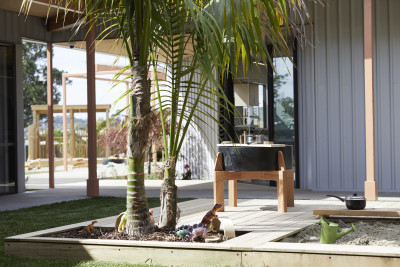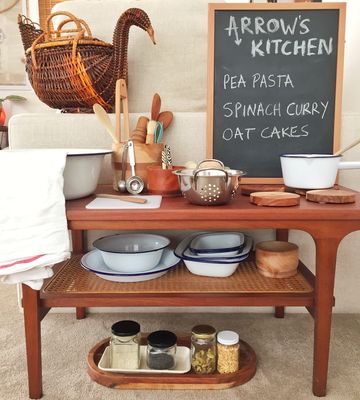An environment is a living, changing system. It’s more than just the physical space; it includes how time is structured, how we group children and our role as educators within the environment. Environments can condition how we feel, think, and behave and dramatically affect the quality of our lives. If we view the environment as a powerful contributor to children’s learning, we will begin to rethink how we position, place, and use materials to support children in their investigations.
Designing beautiful spaces without foundational knowledge or pedagogy is meaningless and tokenistic. Instead, we need to recognise that children’s ideas and theories can be springboards for how we intentionally create meaningful, healthy learning environments - indoors and outdoors.
With this in mind, could it be time to review your learning landscape? Reconsider whether its layout and design welcome invitation for investigation? Combining design principles with a resourceful approach to materials could enhance your early year's space no-end. Read on (and watch) to find out how.
Pedagogy of space and materials
“The wider the range of possibilities we offer children, the more intense will be their motivations and the richer their experiences. We must widen the range of topics and goals, the types of situations we offer and their degree of structure, the kinds of combinations of resources and materials, and the possible interactions with things, peers, and adults.” Loris Malaguzzi
- What invitations for investigation can we offer children to spark their curiosity in the learning environment?
- How might we expand or challenge our mindset of materials?
- How and when are they used in a program?
- Are we limiting children’s potential?
Starting with your philosophy, consider your underpinning beliefs about the environment and its role in your early learning setting, as this will impact your choices. You might like to consider:
- Function - How does the function of a space affect the flow? Are doors open for free access between the indoor and outdoor classrooms?
- Aesthetics - What does beauty mean to you and your team?
- Materials - What possibilities are there to increase the use of materials? What has free access and what does not? E.g. scissors, hot glue guns, proper tools, etc.
- Interconnectedness - How might we interact across people, places, and things in our environment? Not as separate subjects or knowledge.
- Relationships - Are we in ‘joint-attention’ with children? Listening and responding in ways that create cognitive conflict?
Case Study #1: Kardinia Childcare and Kindergarten in Geelong, Australia.
When Kardinia initially reviewed its philosophy and considered its beliefs of the environment, the following points were agreed to be honoured:
- Invitations to learning reflect children’s ideas
- Indoor and outdoor classrooms are seamlessly integrated
- Order and organisation of the environment
- Real tools, real materials, real experiences
- Risky play and children as risk assessors
- Freedom of movement principles
- Culturally inclusive spaces.
Watch the video to hear more about the review process
The example shown puts the philosophy review into practice with Kardinia Childcare and Kindergarten, Geelong, Australia.
Layout and design of the environment
The layout of an environment defines what can happen, where it happens, and gives a sense of how to move within the space. All of this contributes to how well everything flows within an environment.
There are many creative ways to define space and to create more intimacy inside or outside. When designing an early years environment, consider the function, layout, materials, and storage, using floor finishes, furniture, and soft furnishings to define spaces.
Watch the video below to hear more about the layout and design of early years environments
The example shown is Kardinia Childcare and Kindergarten, 1 - 2-year-old room, in Geelong, Australia.
Invitation for investigation
Once we have settled on the layout, we can move towards setting up an invitation for investigation. It’s like we start BIG, then we go SMALL. You might like to consider the following:
- Start with children’s ideas - not the curriculum area. This is important because it’s children’s ideas that drive a play-based program. Once we recognise the idea (or theory) children are wrestling with,
- Decide where exploration is best to take place within the environment,
- Define the space further using plants, fabrics, or screens,
- Define what materials, tools, and equipment will support the exploration of this idea. Layer resources thinking about size, scale, and quantity,
- Arrange the materials in a way that is inviting,
- Listen and notice how children play,
- Adapt the environment to evolve with the play.
“When everything is emphasised, nothing is emphasised” Aluer
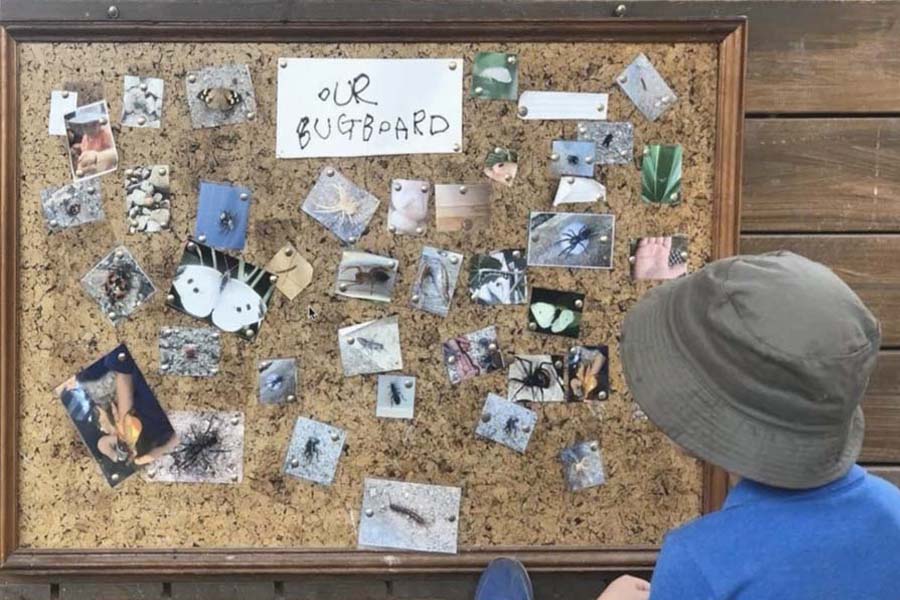
Bug board at Kardinia Childcare and Kindergarten Geelong, Australia.
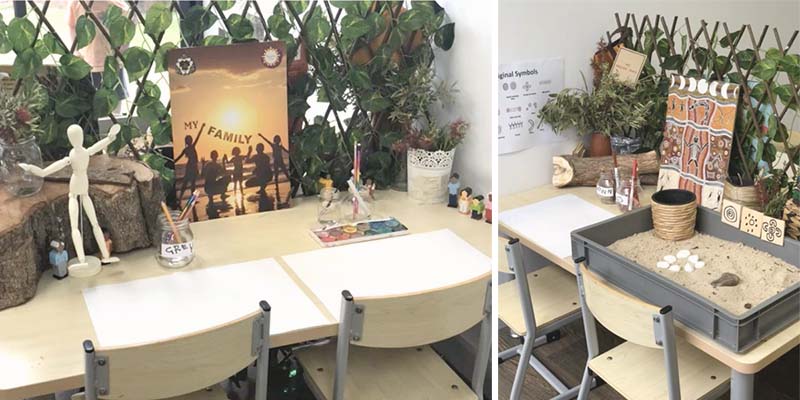 LHS Image of Kardinia Early Learning, Geelong, Australia. Invitation for investigation explores family, using a range of tools and resources – watercolour, figurines, models, books, layers defined by natural barriers and levels, creating a sense of intimacy.
LHS Image of Kardinia Early Learning, Geelong, Australia. Invitation for investigation explores family, using a range of tools and resources – watercolour, figurines, models, books, layers defined by natural barriers and levels, creating a sense of intimacy.
RHS Image of Petit Early Learning, Forest Hill, Australia. Explores aboriginal perspectives using symbols, sand as storytelling, natural materials, and puppets to tell a story. Layering materials based on the idea.
Design principles
Another way to think about setting up an invitation based on children’s ideas is to use the seven design principles from the book Inspiring Spaces for Children. The principles offer a framework to consider not only the aesthetic but also the function and purpose.
- Nature inspires beauty
- Colour generates interest
- Furnishings define space
- Texture adds depth
- Documentation and artifacts enhance the environment
- Elements heighten the ambience
- Focal points attract attention.
Watch the video to hear how the Seven Principles of Design is put into practice
The example shown is Kardinia Childcare and Kindergarten, in Geelong, Australia.
Why outdoor matters
The outdoor classroom is just as valuable as the indoor classroom and its planning should receive the same amount of attention. We still consider the layout, function, and investigations for learning but at the same time recognise that the outdoors can offer something much richer when it reflects the natural world. When in nature-based environments children learn, recognise, assess, and negotiate risk to build confidence and competence.
Children who are outdoors more often are more active. Research shows that children who play regularly in natural outdoor settings get sick less often, are more resistant to stress with lower incidences of behavioural challenges, and have more positive feelings about each other. Therefore, playing outdoors is vital to our health and wellbeing.1
Creating challenge for children
Research shows that children seek out the following elements in their play:
- Height
- Speed
- Real Tools
- Protected Spaces – the need to hide
- Rough and Tumble
- To Investigate, Uncover, and Discover.
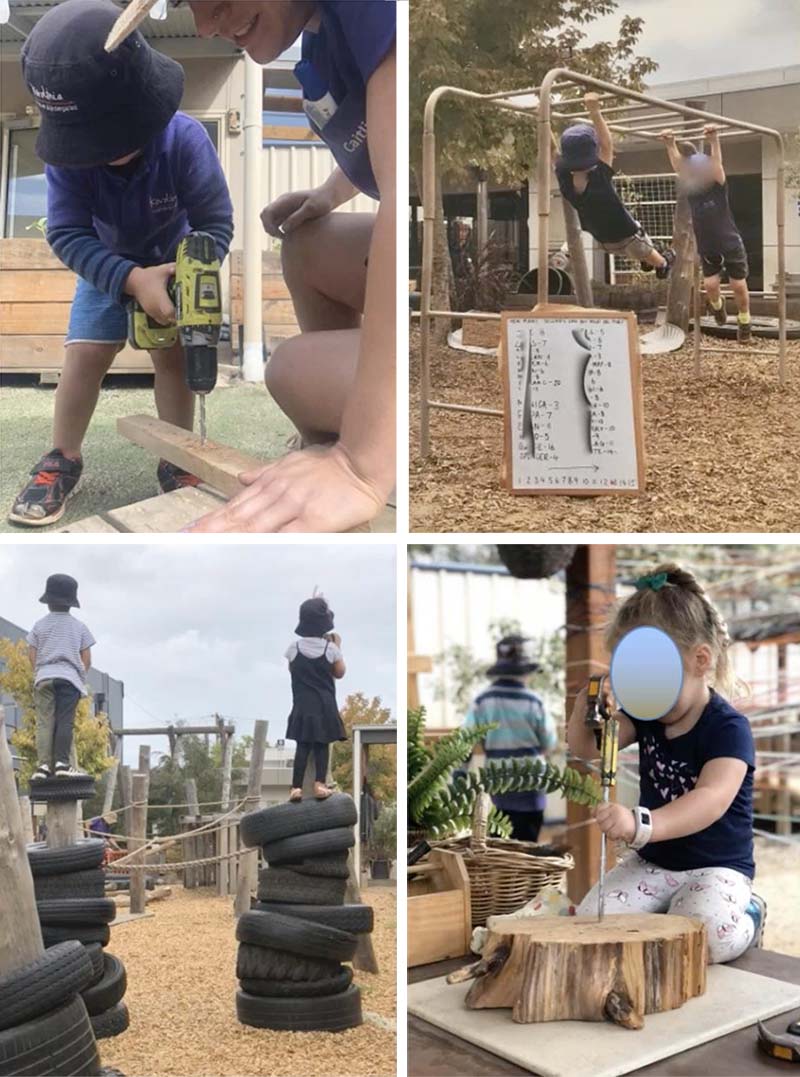 These images show the above elements. Risk assessment documentation and supervision are essential to ensure children can make these important connections and motivate children to sustain their interests. Images from Kardinia Childcare and Kindergarten in Geelong, Australia.
These images show the above elements. Risk assessment documentation and supervision are essential to ensure children can make these important connections and motivate children to sustain their interests. Images from Kardinia Childcare and Kindergarten in Geelong, Australia.
“I am convinced that standardised playgrounds are dangerous, just in another way: When the distance between all the rungs in a climbing net or a ladder is exactly the same, the child has no need to concentrate where he puts his feet. Standardisation is dangerous because play becomes simplified, and the child does not have to worry about his movements.” Helle Nabelong
Being resourceful
Are we driven for convenience? What happened to fixing something, creating something, and turning something old into something new? Perhaps there is an opportunity to rethink what you already have in your early childhood setting but for a different purpose?
Video showing images of Kardinia Childcare and Kindergarten Geelong, Australia.
Loose parts
Captivating, open-ended, and moveable materials support children in evaluating and creating, not just simply remembering and understanding. Is it time to rethink the intelligence of materials?
“Beautiful found objects and materials that children can move, manipulate, control and change while they play. Children can carry, combine, redesign, line up, take apart and put loose parts back together again in almost endless ways.” Daly & Beloglovsky, 2016
Case Study: The Power of ‘Experience with Materials’
Together with the Kardinia Childcare and Kindergarten Directors, we experienced a new way of working with the material rope during a study tour in New Zealand. At Childspace, Northland we saw that children made their own swings and this got us thinking. We took these ideas back to Kardinia and started to have a go at this ourselves.
Possibilities for practice
We need to encourage educators not to be afraid to shift their point of view about how children’s spaces are designed and prepared, and how to engage materials in intelligent ways. Think about - design, materials, immersing in the experience, and the co-construction between adult and child.
“One of the great joys of designing learning spaces for young children is the moulding together of the functionality and the aesthetic components with an understanding of ‘human development’ - the ‘why’ joined with the ‘what’.” Robin Christie
Kelly Goodsir is the Managing Director of KG Learning, a professional learning company that focuses on improving pedagogical practice through strategic educational change in early childhood education. Although her mum would say her teaching career began at the young age of 4, she has formally engaged with the early childhood sector for 20+ years across Australian and New Zealand contexts.
Kelly has dedicated her career to her own and others’ development of pedagogy, learning, and leadership and believes wholeheartedly that anything is possible through ‘thinking and learning collaboratively’. You will be drawn to Kelly’s creative inspiration, her ability to make the complex simple, and her unwavering advocacy for upholding children’s, families’ and educators’ rights.
Kelly invites you into thinking deeply about the ‘why’ and ‘how’ of teaching and leadership practice while compelling us to connect wisdom and courage in all that we do.
References
- Natureplaywa.org.au
- Design, Build, Play: Respectful Learning Spaces in Early Childhood Education. Christie, R. (2018). Childspace Institute.
- Loose Parts: Inspiring Play in Young Children. Daly, L. Beloglovsky, M. (2015). Redleaf Press.
- Inspiring Spaces for Young Children. DeViney, J., Duncan, S., Harris, S., Rody, M., & Rosenberry, A (2010). Gryphon House Books.
- Environmental Education in Early Childhood (VIC) Inc. www.eeec.org.au
- The Little Book of Treasure Baskets. Roberts, A. (2002). Little Books.
- Creating Environments that Intrigue and Delight Adults and Children. Shepherd, W & Eaton, J. (1997). Childcare Information Exchange 9/97-42.
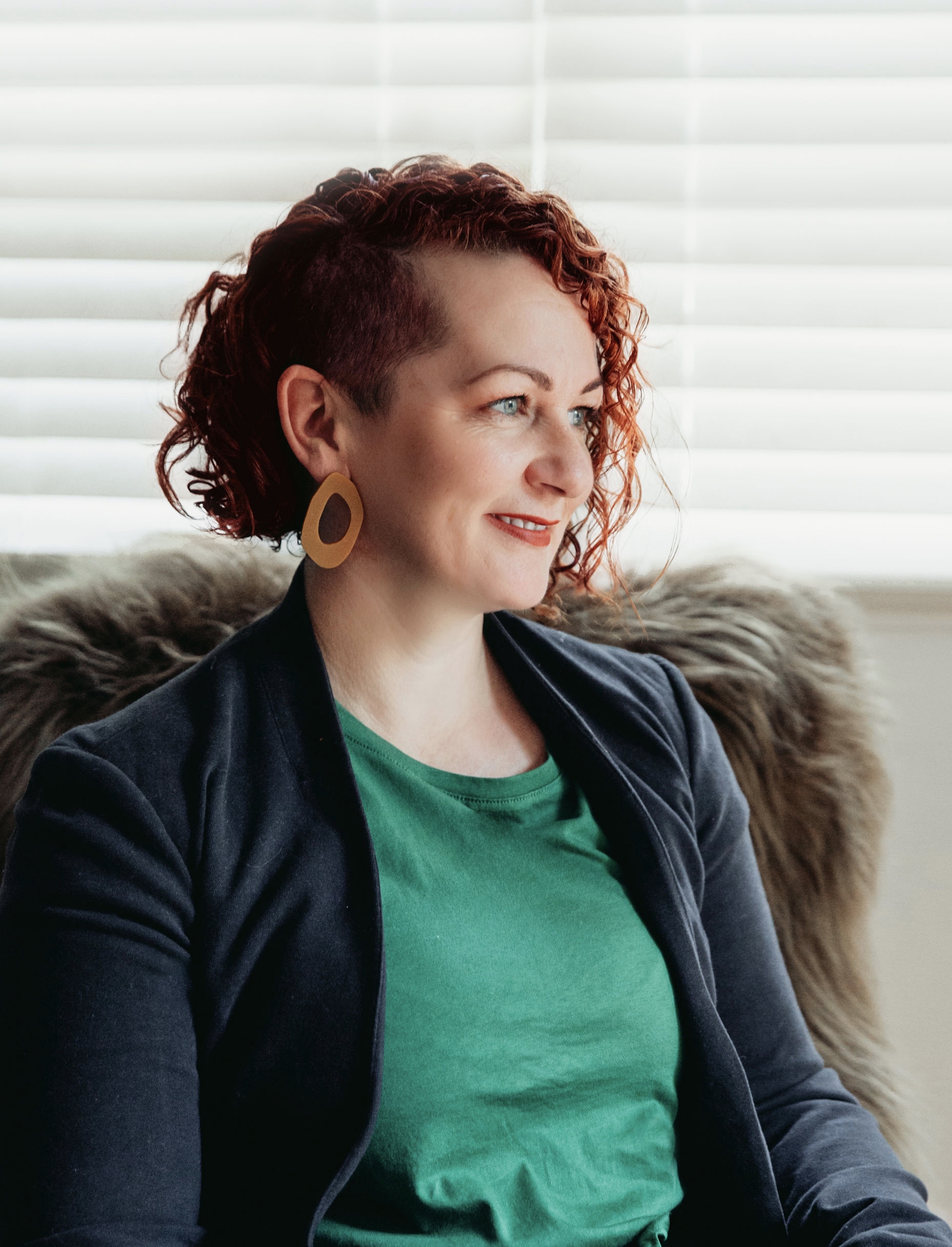 Kelly Goodsir
Kelly Goodsir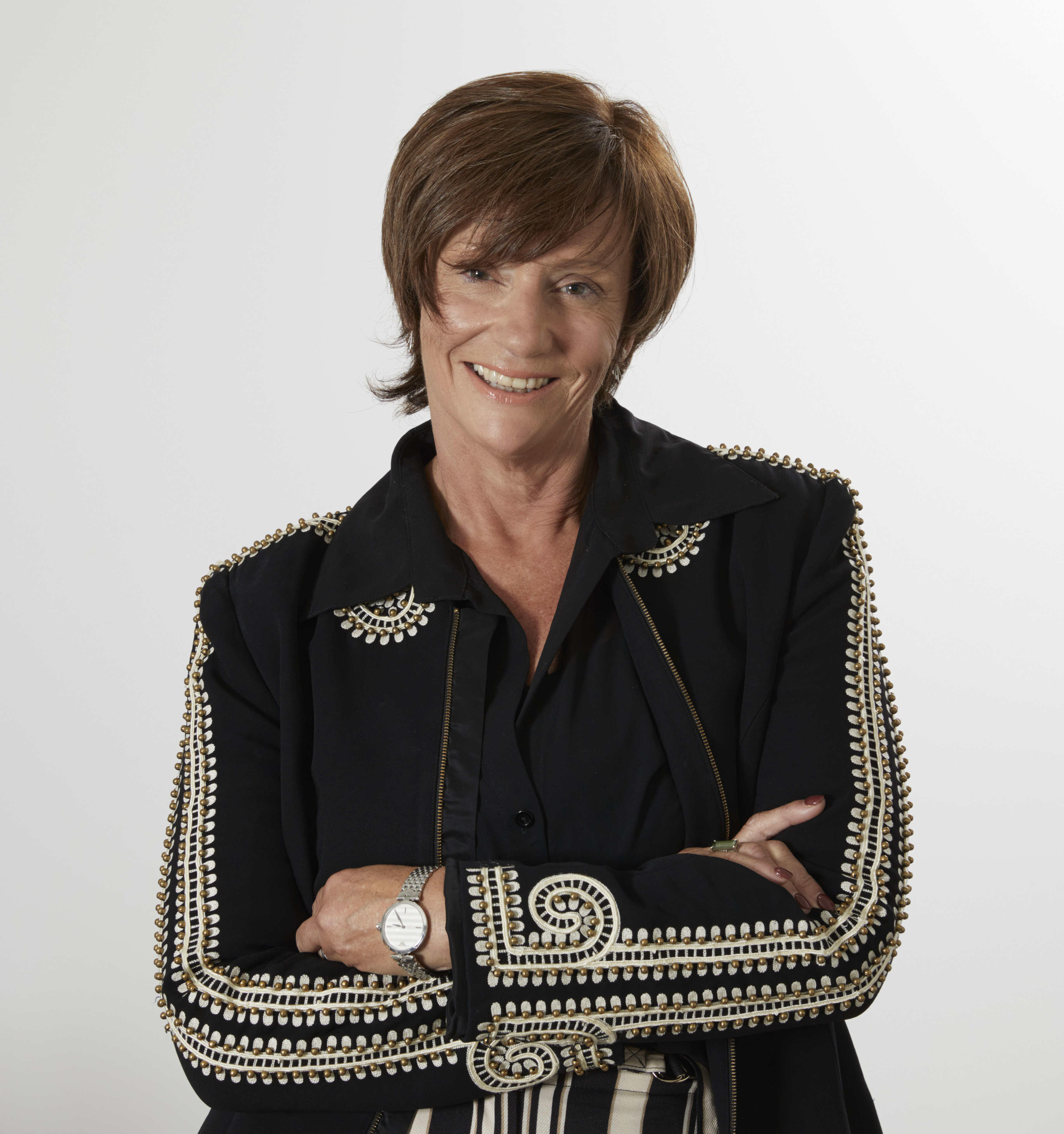
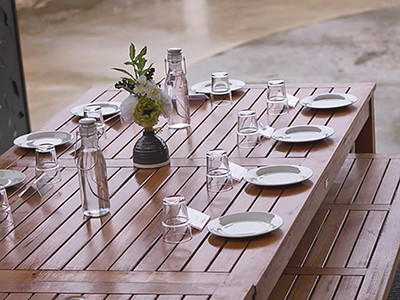
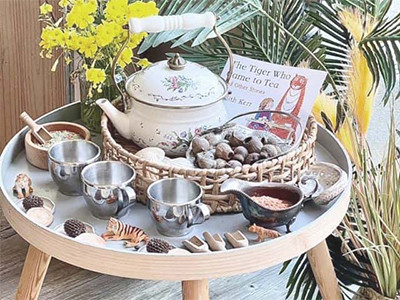
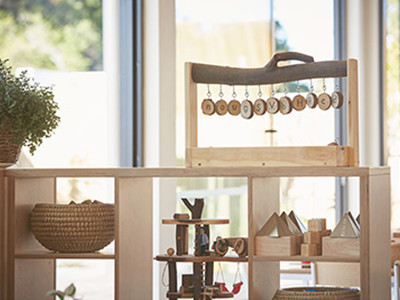
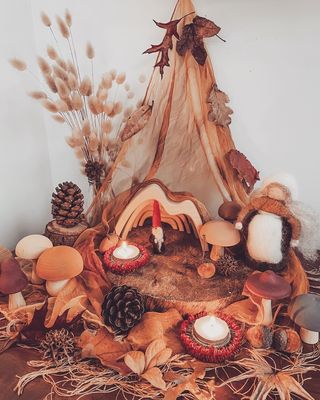
 Jade Leigh Kelly
Jade Leigh Kelly